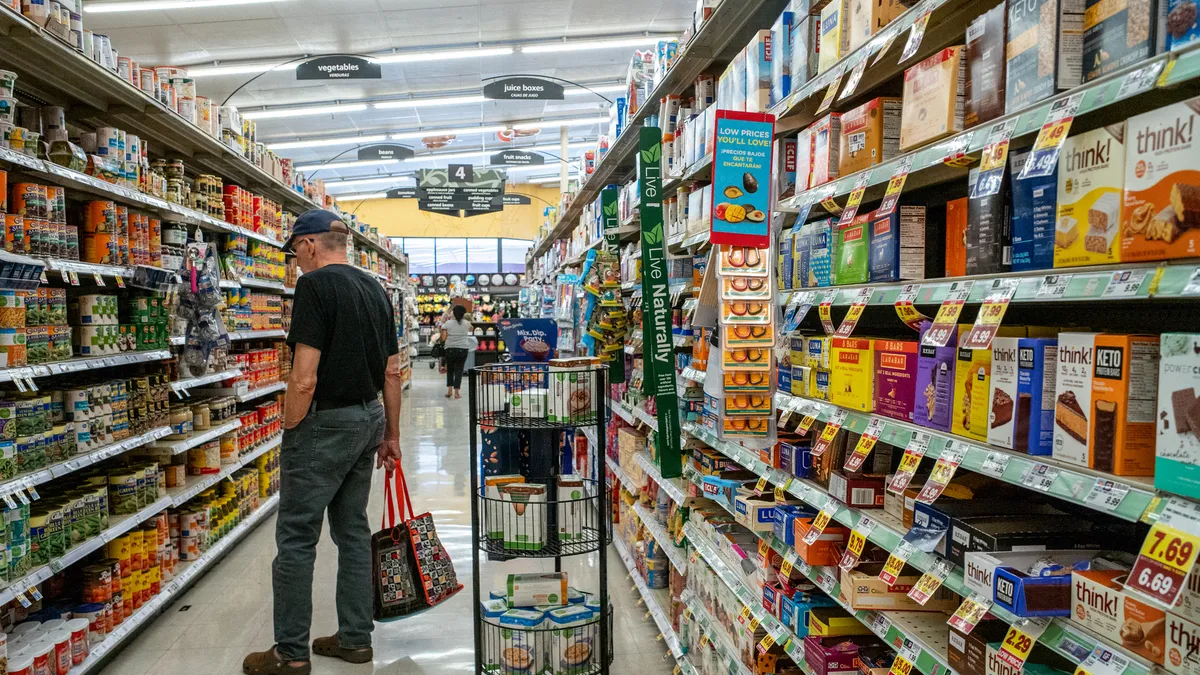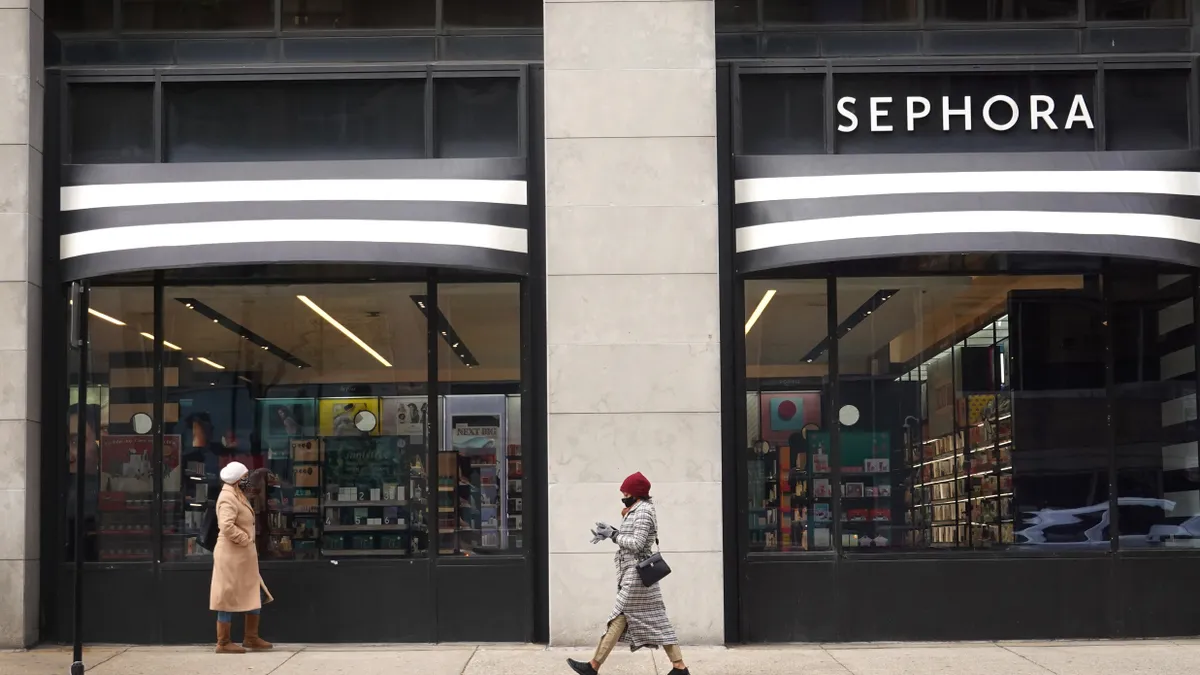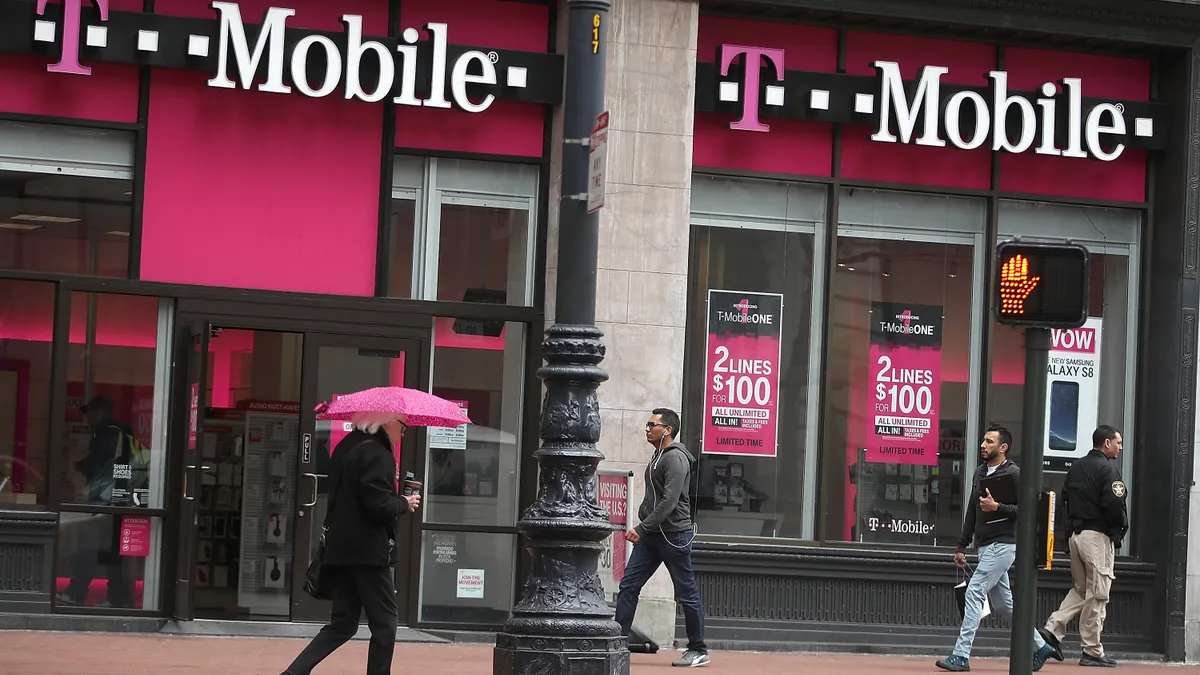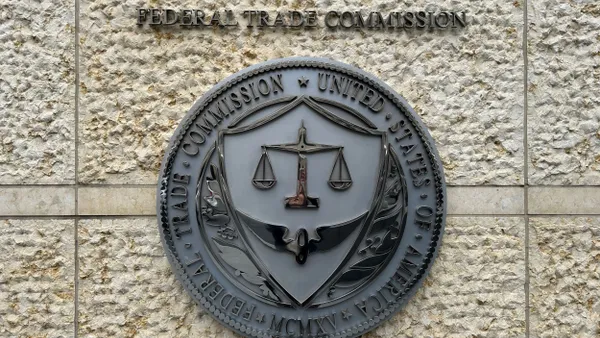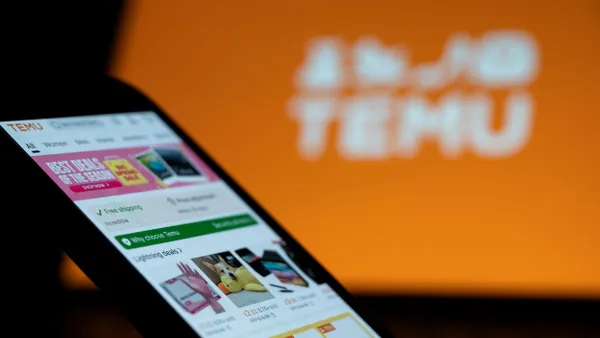Dive Brief:
- Consumer spending during the first quarter probably shrank for the first time since the pandemic as prices rose and household confidence slumped, according to the Conference Board.
- After gaining 4% during Q4, inflation-adjusted consumption during Q1 likely declined at a quarter-over-quarter annual rate of 0.2%, the Conference Board said.
- “Such a swing reflects tough choices consumers are facing amid rising prices,” Conference Board Senior U.S. Economist Yelena Shulyatyeva said in a report. “Consumers will likely become even more cautious and tighten their purse strings further if inflation continues to rise.”
Dive Insight:
Price pressures increased in February and consumer spending inched up a less-than-expected 0.1%, the Bureau of Economic Analysis said Friday. The data sharpened concerns that the economy is sinking into a period of weak growth and rising inflation.
The personal consumption expenditures price index excluding volatile food and energy — the Federal Reserve’s preferred measure of inflation — accelerated to a 2.8% annual rate in February from 2.6% in January. The Fed aims to curb inflation at 2%.
The gain in so-called core PCE “is likely just a precursor to sharper increases in the coming months as tariffs make their way into consumer price data via either a direct impact or on the back of rising inflation expectations,” the Conference Board’s Shulyatyeva said in a statement.
Consumers in recent months, while buying extra goods in anticipation of import duties, have trimmed spending on restaurants and other discretionary spending, she said.
“Stockpiling ahead of potential tariff implementation on a wide range of consumer goods could lead to a pullback in goods spending later this year, once and if the touted tariffs take effect,” Shulyatyeva said.
President Donald Trump has either implemented or threatened tariffs on steel, autos, aluminum and other goods produced by major exporters including Canada, China, Mexico and the EU. He has said he plans Wednesday to announce reciprocal tariffs targeting most U.S. trade partners.
The mix of rising prices and slowing growth will pose a challenge to the Fed, which is mandated by Congress to ensure maximum employment and price stability, according to Shulyatyeva.
Ultimately, though, cooling economic growth will probably slow inflation and prompt the central bank to ease monetary policy during the second half of 2025, she said.
“Barring de-anchoring of longer-term inflation expectations, we anticipate that the negative impact on growth will likely overwhelm the impact of higher inflation, resulting in the Fed reducing policy rates” during the second half of 2025, Shulyatyeva said.
Fed officials on March 19 downgraded their forecast for economic growth in 2025 to 1.7% from 2.1% in December, and several private sector economists have followed suit.
Monthly surveys this year by both the Conference Board and University of Michigan have shown a decline in consumer optimism and an increase in concerns about price pressures.



